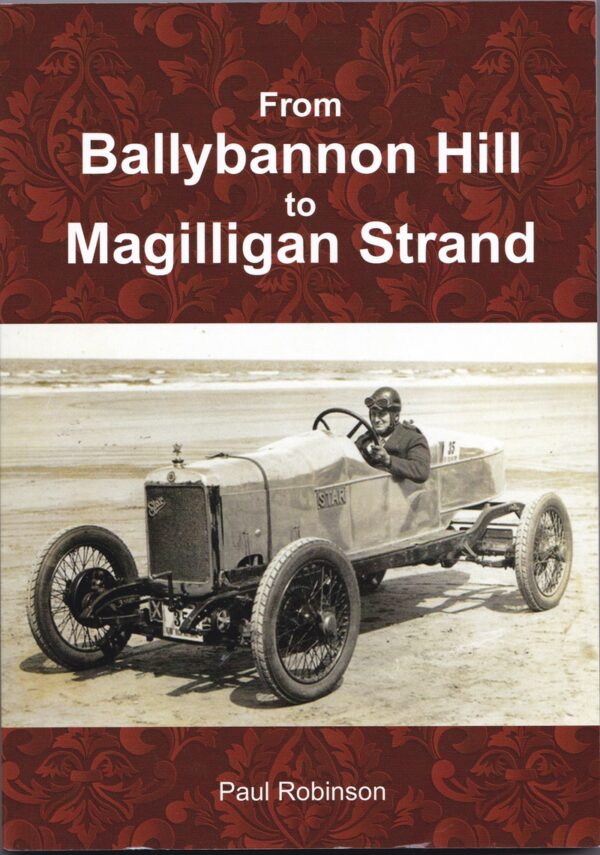
By Paul Robinson
2024 review by James Loveridge
One of the problems with history is that while it is fairly easy to research the big stuff, Kings and Queens, battles, and that Gutenberg perfected the printing press, it is not so easy to find the small stuff, the details, that fill out the picture.
Paul Robinson, a fellow SAHB member, has done just that for an interesting aspect of motor sport in his recently published book From Ballybannon Hill to Magilligan Strand. Paul has continued on the path laid out, albeit on a smaller scale in Paul’s case by, amongst others, Donald Cowbourne in his multi-volume magnum opuses (or opera?) British Trial Drivers and British Rally Drivers. The strength of this book is that virtually all events, competitors and results are given.
Ireland has been prominent in British motor sport. The Irish authorities were pretty relaxed about racing on public roads, starting in 1903 when the Gordon Bennett race was held and continuing with the TT (Tourist Trophy) races and others. However, the creation of the Irish Free State caused many issues including who would run motor sport in Northern Ireland, or Ulster if you prefer. At the time it was the Royal Irish Automobile Club in Dublin and Paul tells how the issue was resolved, initially involving the Royal Automobile Club in London and two Ulster automobile clubs.
Very much promoted by the local motor dealers amongst whom Harry Ferguson was prominent, the Ulster Club was always quite small-scale. Apart from an intended Grand Prix in 1924 which never took place as an entrant killed himself doing an unauthorised practice, its activities were essentially limited to hill climbs and sprints using both public roads and the beach. The club had no involvement in the very successful TT Races though it did organise a hill climb just before the TTs and some prominent British drivers such as Earl Howe, Dr Benjafield and Mrs Elsie Wisdom took part.
The majority of the events organised were generally well supported, often with fields of 60 or more. Nearly all the competitors were local though one or two English drivers did come over. One of the rather unusual features of the event held at Ballybannon Hill was that, as the road was dead straight and quite wide, the competitors raced side by side, just as they still do at the Brighton Speed Trials and at drag racing. That continued until 1933 when only the up-to-1,100cc cars went up two at a time. The Cub also organised in 1931 the first Ulster Motor Rally which matured into the Circuit of Ireland Rally.
A significant part of the Club’s activities was sand racing at Magilligan Strand, by the look of it not unlike Pendine. There the competition was over several laps, so a bit different from the traditional sprint of today. Conditions varied with tide and wind but it seems that some pretty exciting racing took place, as illustrated by the photograph on page 108 of Mr Wilkinson and his Rhode participating in a spectacular, but fortunately non-fatal, accident. On that point all sorts of cars, Stars, Clynos, Gwynne and Metallurgique for example as well as more sporty types were used at the start but towards the end Austin, Riley, Frazer Nash etc. predominated. Once, a car called a Queensberry was entered – Georgano doesn’t mention it; does anyone know anything about it?
This nicely produced book is obviously the result of much painstaking research and skilful blending of press reports and Paul’s own comment to make a very readable, coherent story. It is quite well illustrated though most images are from press or other sources so not of the clearest, but they do give a nice idea of what these events were like. It is thoroughly recommended.
This 304-page, paperback book is self-published by Peter at 120 Kings Road, Belfast, Northern Ireland, BT5 BX, robinsonbooks.co.uk at £30.
Publisher: Robinson Books, 6 December 2023
Description: 304 pages, paperback, 210mm x 148mm.
ISBN 13:978-1-7393118-2-7







Leave a Comment